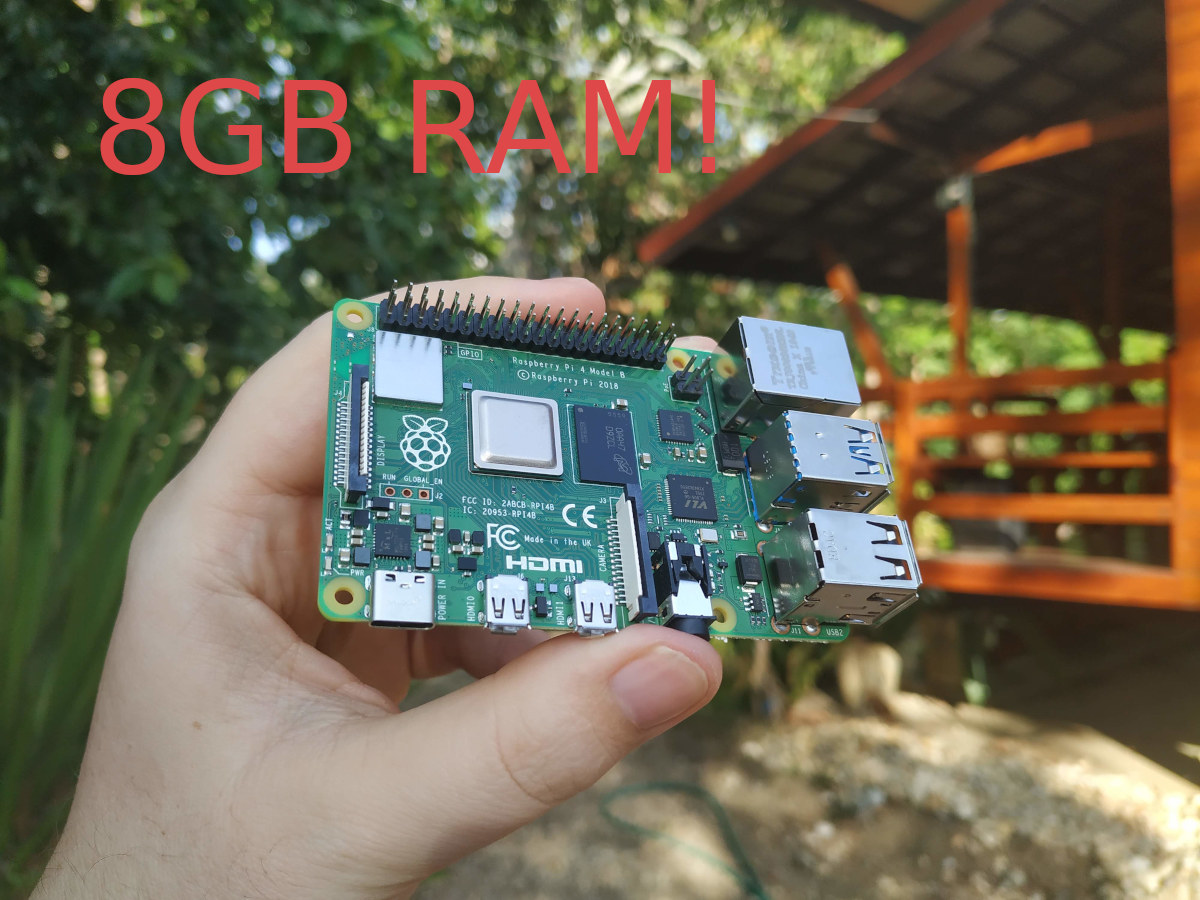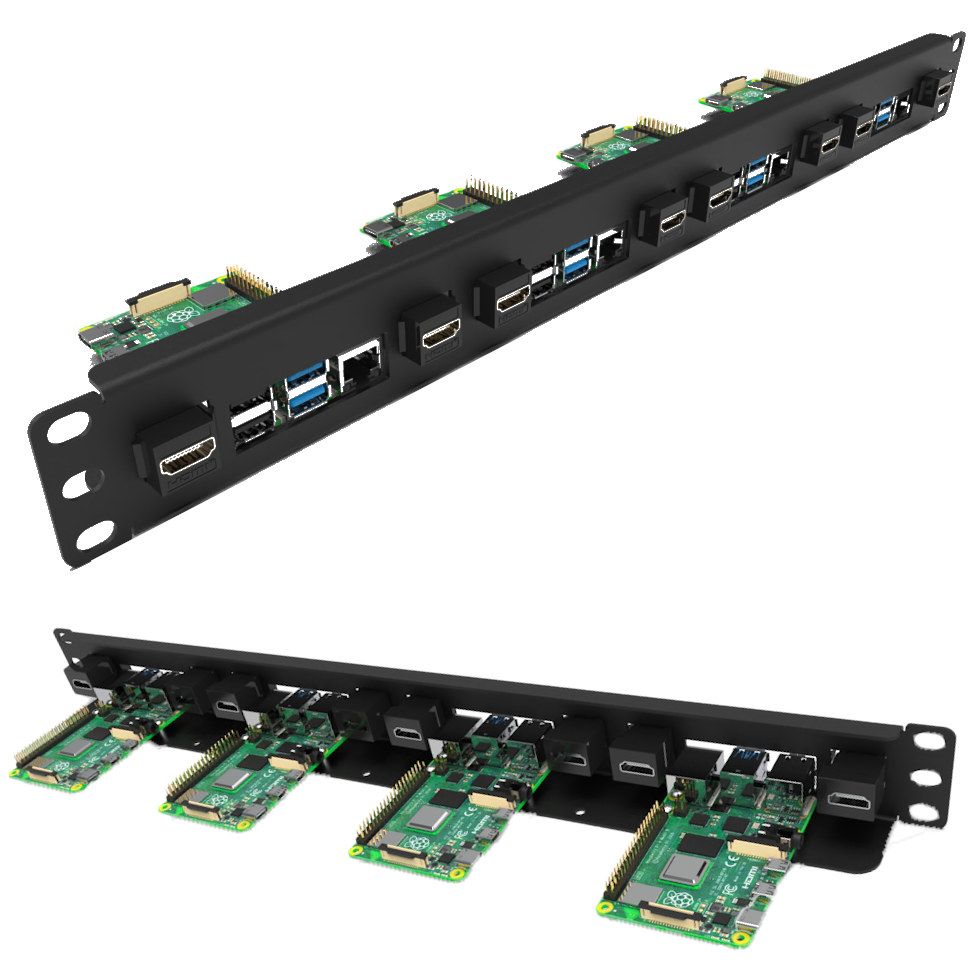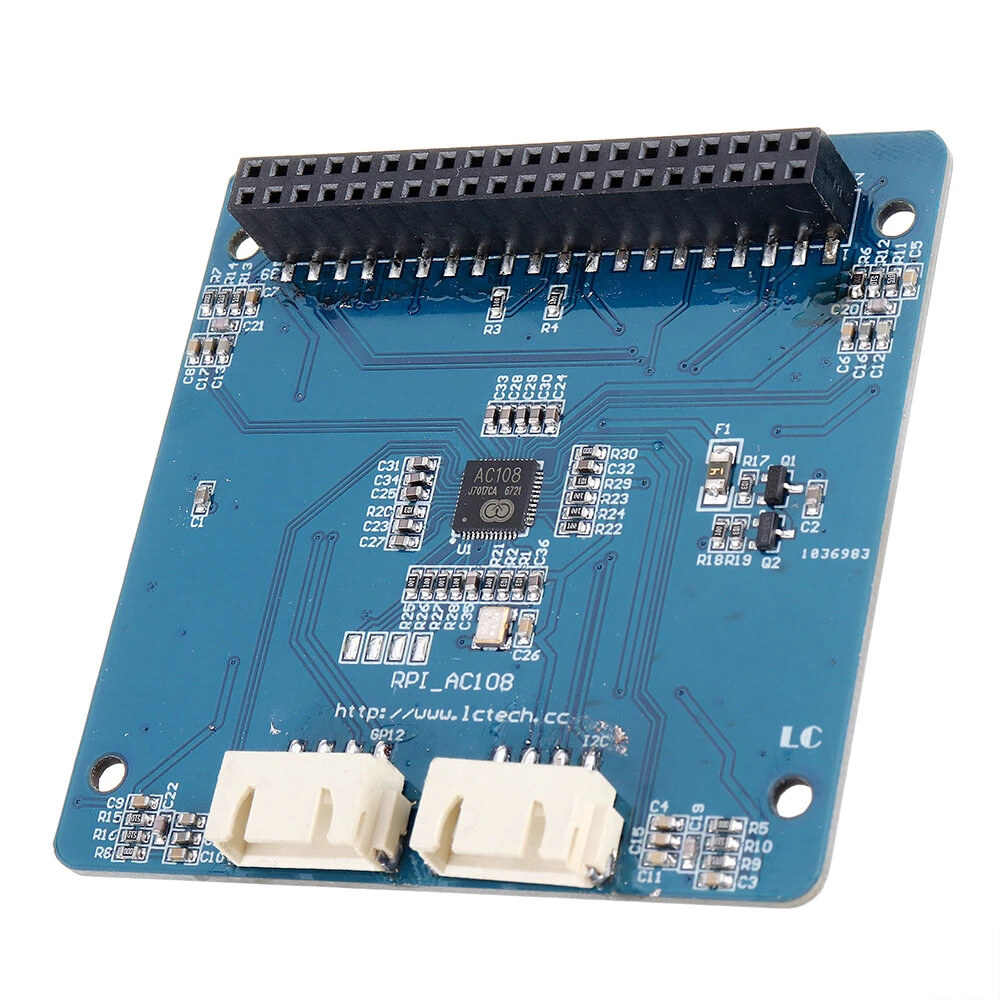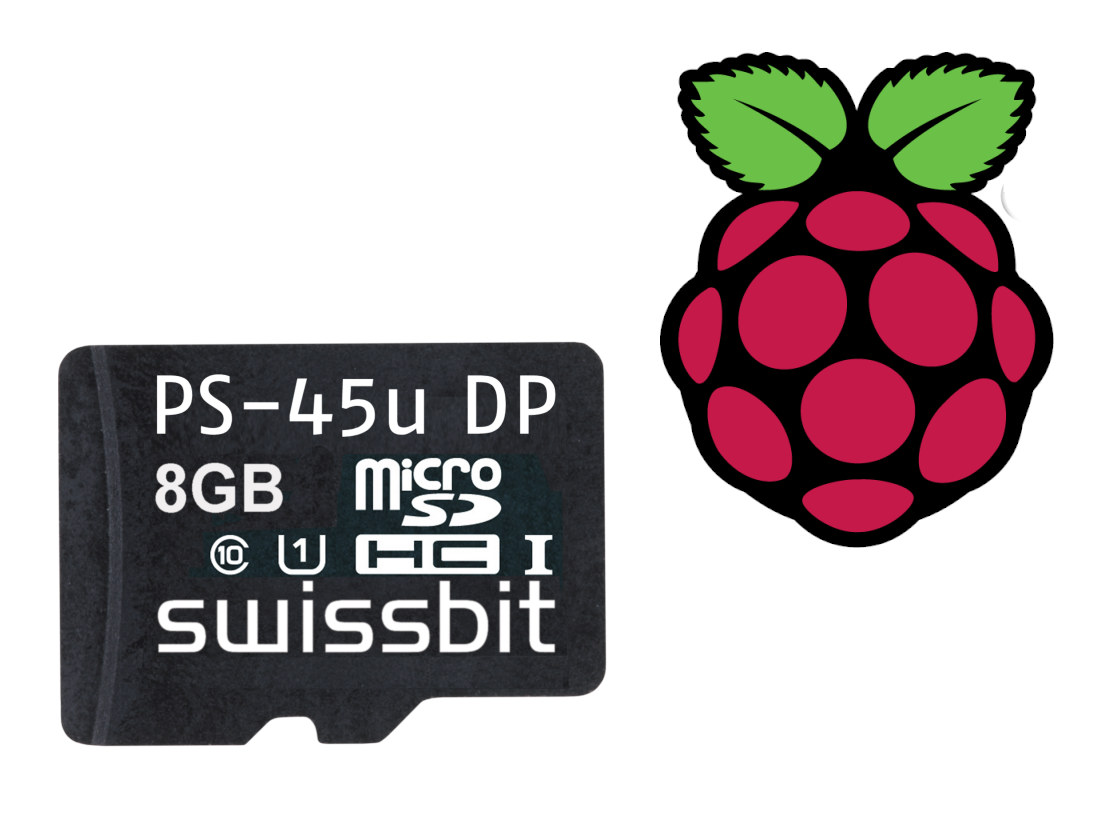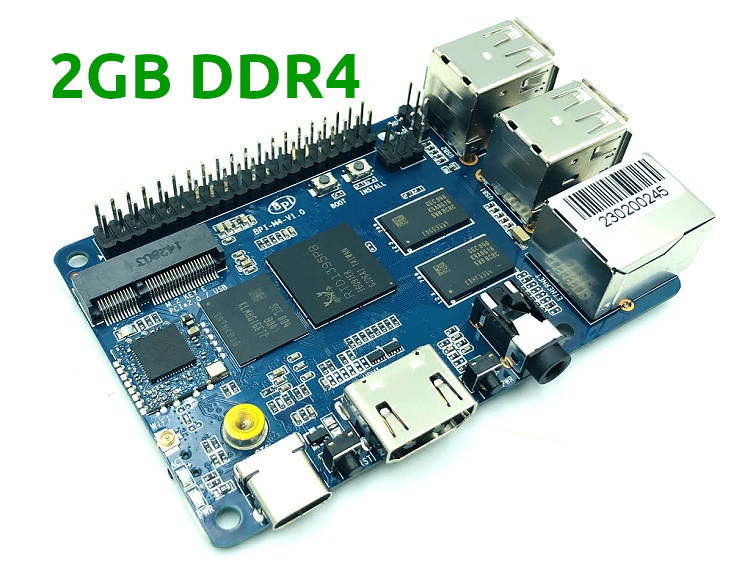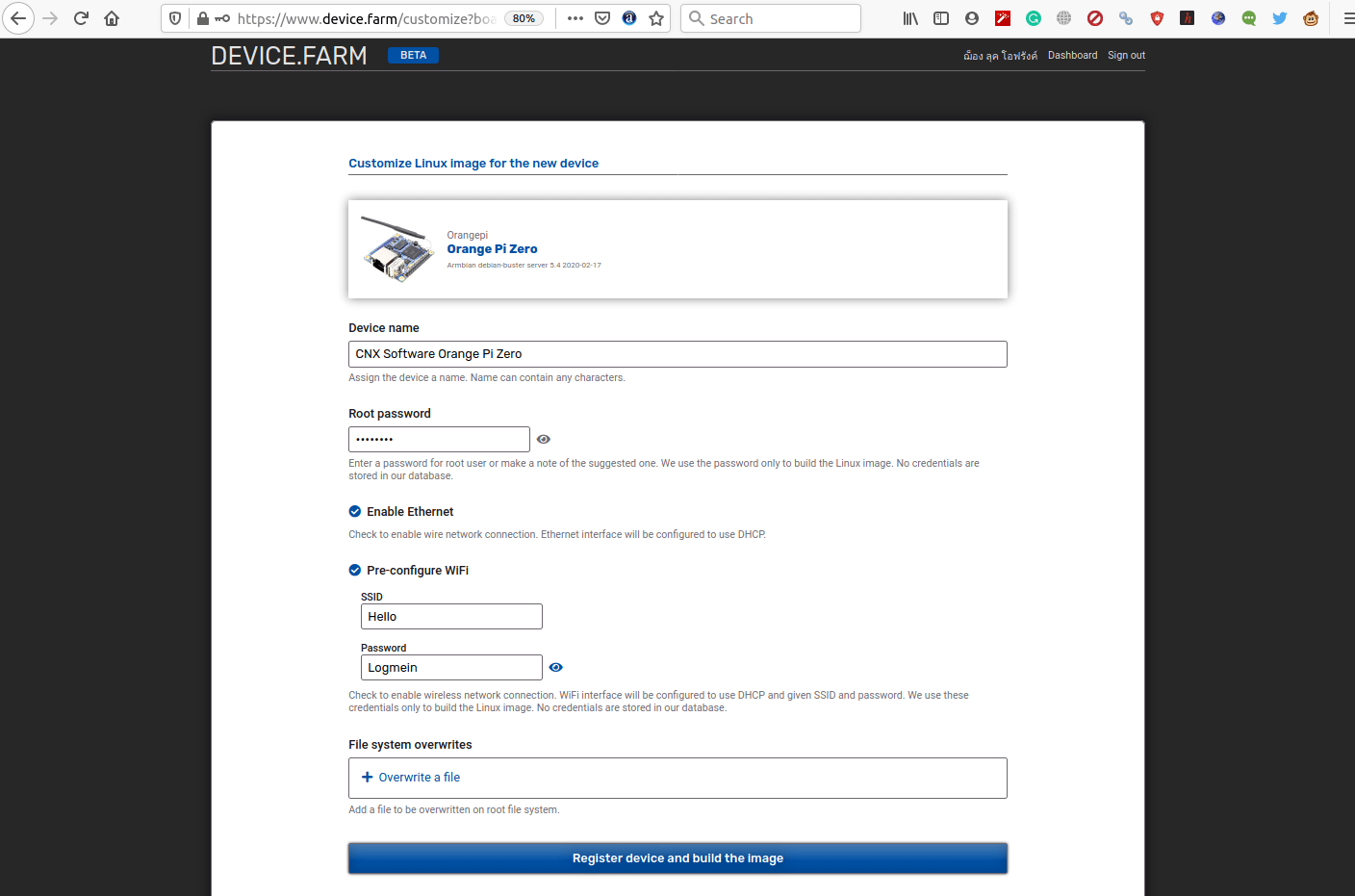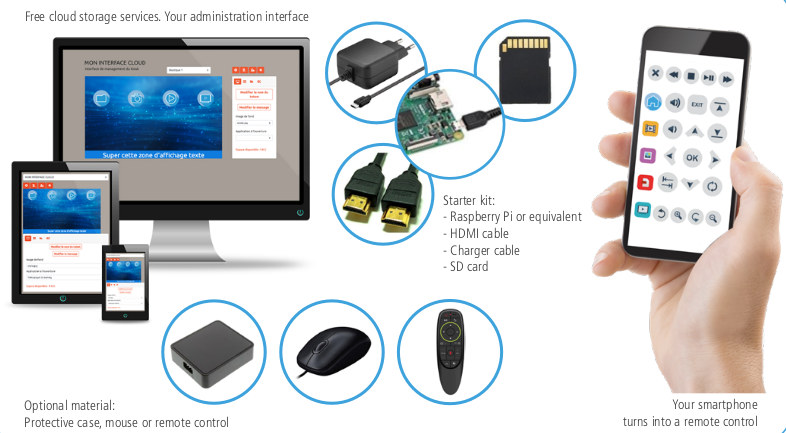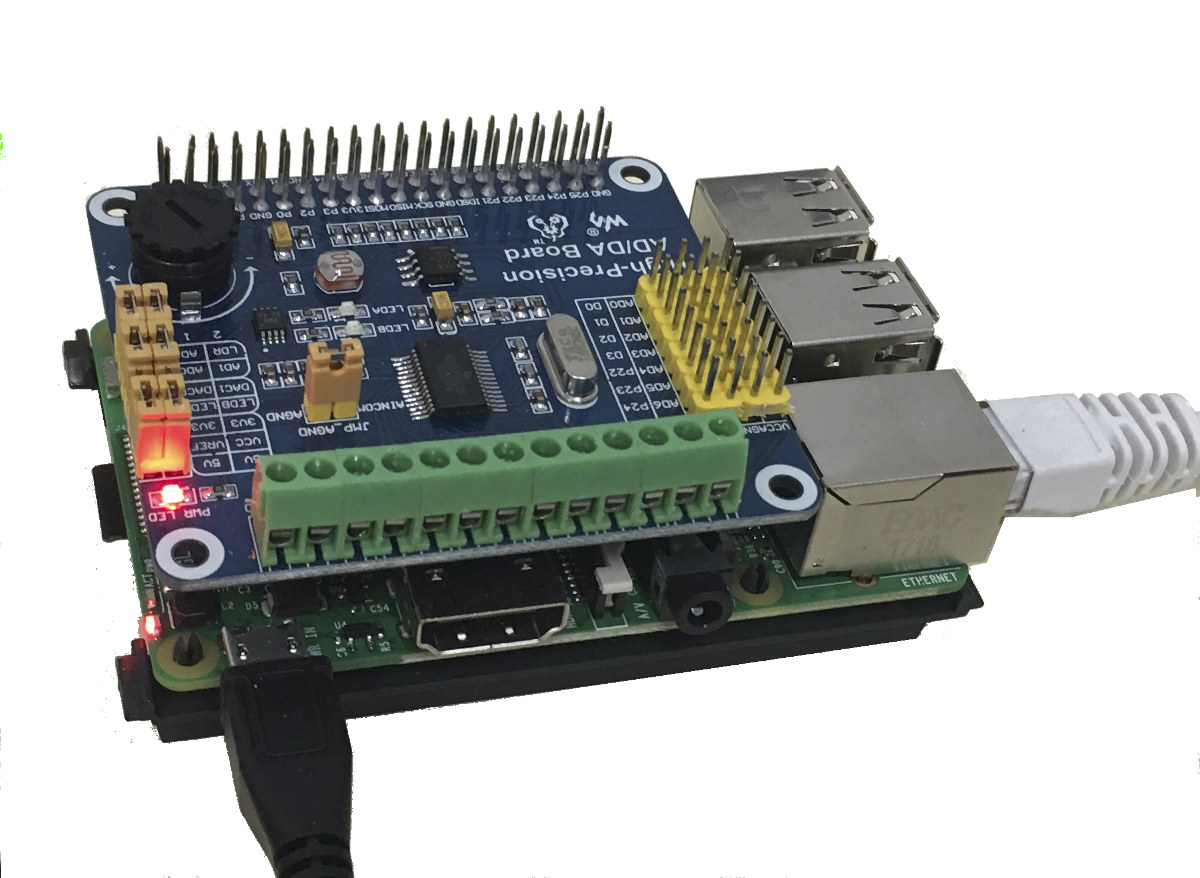The Raspberry Pi 4 Model B was launched in June 2019 with Broadcom BCM2711 Arm Cortex-A72 processor coupled with either 1, 2, or 4GB LPDDR4 RAM. But there were expectations that a Raspberry Pi 4 with 8GB RAM or an 8GB eMMC flash may be eventually launched, as some of the user guides read “Product name: Raspberry Pi 4 Model B 1 GB, 2 GB, 4 GB + 8 GB variants”. We now know the answer as the Raspberry Pi Foundation has just introduced Raspberry Pi 4 with 8GB RAM. Raspberry Pi 4 8GB specifications are the same except for the RAM capacity: SoC – Broadcom BCM2711 quad-core Cortex-A72 (ARMv8) @ 1.5GHz with VideoCore VI GPU supporting OpenGL ES 3.0 graphics System Memory – 8GB LPDDR4 Storage – MicroSD card slot Video Output & Display I/F 2x micro HDMI ports up to 4Kp60 3.5mm AV port with composite video (and […]
19″ Rackmounts Support up to 12 Raspberry Pi SBCs
Last time, we wrote about myelectronics.nl we covered their Tesla Cybertruck Case for Intel NUCs which housed the mini PC into a mini CyberTruck looking enclosure. The company has now come up with new housing solutions specifically designed for Raspberry Pi 1/2/3/4 Model B/B+ boards. The 19″ rackmounts support one to twelve Raspberry Pi SBCs and can be used for Raspberry Pi clusters, video walls, and so on. The 4-board model fitted with four Raspberry Pi 4 boards caught my attention as it also offers an option to bring the HDMI outputs on the same side as USB and Ethernet port like in Argon One case but with more convenient full-sized HDMI ports. The other Raspberry Pi rackmount model allows you to insert up to 12 Raspberry Pi board in a vertical position with optional HDMI ports as shown above. That’s great for density, but you may have to take […]
$13 RPI_AC108 Audio Board Ships with a 4-Mic Array for Raspberry Pi
X-Powers is a subsidiary of Allwinner, better known for its PMIC chips for Allwinner Cortex-A processors., but we also discovered X-Powers AC108 quad-channel ADC chip for microphone arrays in 2017. Soon after, Seeed Studio launched ReSpeaker 4-Mic Array for Raspberry Pi, but I had completely forgotten about the audio chip since then. That’s until this morning when I came across RPI_AC108 audio board also coming with four microphones and several LEDs. RPI_AC108 specifications: Audio X-Powers AC108 quad-channel ADC with I2S/TDM output transition 4x MEMS microphones Expansion 2x Grove interfaces (1x I2C, 1x GPIO port using pins 12 & 13) 40-pin Raspberry Pi compatible header working with Raspberry Pi Zero / Zero W / 2B / 3B / 3B + / 4 and other compatible development boards Misc – 12x LEDs (APA102) connected over SPI, GPIO5 enables power Dimensions – 65mm x 65mm x 9mm The board gets its power (3.3V and 5V) from the […]
Swissbit Secure Boot for Raspberry Pi Relies on MicroSD Card and optional USB Stick
Swissbit secure boot solution for Raspberry Pi consists of an 8GB or 32GB “PS-45u DP” Micro SD card pre-loaded with their secure firmware, and offering the following key features: Security policies with flexible and configurable authentication Access protection with configurable retry counter Protects Raspberry Pi boot loader Encrypts user and boot code to protect license, know-how, and IP The boot image can be set read-only to prevent unauthorized modification Restricting the access to data on the card by various configurable security policies: PIN or USB or NET policy Use 8GB PU-50n DP USB stick as 2nd authentication for secure boot Works with Raspberry Pi 2 and 3B+ (I suppose Raspberry Pi 4 support should come soon enough) Note that we previously wrote about an open-source Raspberry Pi 4 UEFI+ACPI firmware to make the board SBBR-compliant and support features such as UEFI secure boot, but Swissbit secure boot is completely unrelated […]
Banana Pi BPI-M4 SBC Gets 2GB RAM, Sells for $43
First unveiled in February 2019, Banana Pi BPI-M4 is a single board computer based on Realtek RTD1395 quad-core Cortex-A53 4K media processor and following Raspberry Pi 3B+ form factor pretty closely. BPI-M4 officially launched in June 2019 for just $38 with 1GB DDR4 RAM, but despite the 2GB RAM option being listed in the specification, the 2GB version of the board was not available, at least on Aliexpress. The good news is that Banana Pi BPI-M4 with 2GB RAM has just started selling for $43 plus shipping on Aliexpress, or in Taobao if you based in China. Banana Pi BPI-M4 2GB specifications: SoC – Realtek RTD1395 quad-core Arm Cortex-A53 processor with Mali-470 MP4 GPU System Memory – 2GB DDR4 RAM Storage – 8GB eMMC flash, micro SD slot up to 256GB, M.2 NVMe SSD Video Output – HDMI 2.0b port up to 4K @ 60 Hz, HDR support Video Decode […]
DEVICE.FARM Generates Raspbian/Armbian Docker Images for about 100 Arm Linux SBCs
Last year, I reviewed BalenaOS and BalenaCloud on Raspberry Pi CM3L based BalenaFin hardware. The solution generates OS images with docker support in order to easily manage and update a fleet of devices remotely over a web interface or client program. Balena.io supports over 60 boards either officially, or thanks to the work of the community, but Pavel Burgr is developing an alternative with DEVICE.FARM supporting close to 100 Arm SBC’s including Raspberry Pi boards, and most Armbian supported Arm SBC’s. DEVICE.FARM is still beta, but the MVP (Minimum Viable Product) version of the website provides: Customized images for supported boards (currently 94 boards) Preinstalled docker Secure remote access to the device’s docker end-point Secure remote access to the device’s services exposed by containers This is functional, but bugs are likely, and documentation still needs to be finalized. I don’t have a board with me, but I tried to generate […]
EasyDK Open Source Cloud Media Platform is Made for Raspberry Pi 3/4
French startup MMPhygital has developed EasyDK (Easy Digital Key) open-source, Python-based cloud media platform designed for Raspberry Pi 3 & 4 SBC’s that allows users to manage and view media content from local storage or cloud storage (2GB free) using a web management interface. The solution acts as a media center with the interface providing access to movies, video streaming, and photos, but you can also display documents such as Microsoft Office files or PDF presentations. Other features include: Dynamic display – manage a network of connected screens remotely (similar to Digital Signage solution) Remote office- Connect to a remote computer using AnyDesk plugin Add-Ons – Add your own module Cloud management – Control EasyDK remotely using the cloud platform to deploy media, launch content automatically, etc.. BLE / IP remote control – Use your smartphone as a Bluetooth or IP remote control Wireless external hard drive Secure Internet Access […]
HART-IP Developer Kit Leverages Raspberry Pi 3B+, Off-the-Shelf Add-on Boards for Industrial Field Communication
Have you ever heard about the bi-directional HART communication protocol? I haven’t, but I should probably have as there’s an installed base of over 40 million HART-enabled instruments according to FieldComm Group who owns the protocol and the organization is comprised of 375 corporate members working on process automation instrumentation, systems, and services. HART stands for Highway Addressable Remote Transducer. The organization is also maintaining the more recent (2009) HART-IP IP-enabled version of the HART field communication protocol and just launched HART-IP Developer Kit whose hardware is comprised of a Raspberry Pi 3B+ SBC and off-the-shelf add-on boards mounted on a DIN Rail mount. List of all hardware components: Raspberry Pi 3B+ SBC DSLRKIT Power Over Ethernet PoE HAT (around $20 on Aliexpress) Waveshare Raspberry Pi High-Precision AD/DA (about $30) DINrPlate DIN Rail Mount. MicroSD card On the software side, the system runs Ubuntu MATE 18.04 64-bit preloaded on the MicroSD […]


